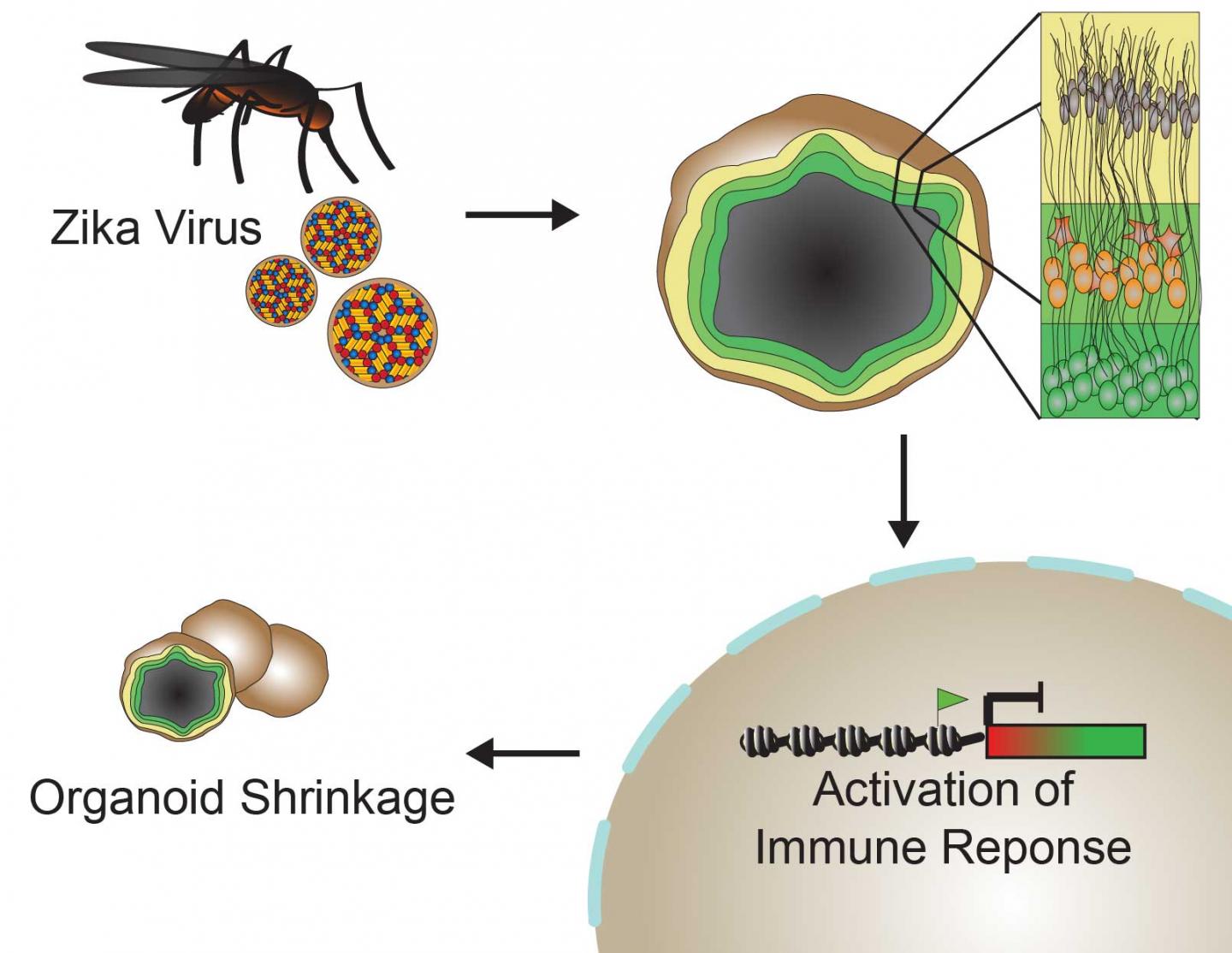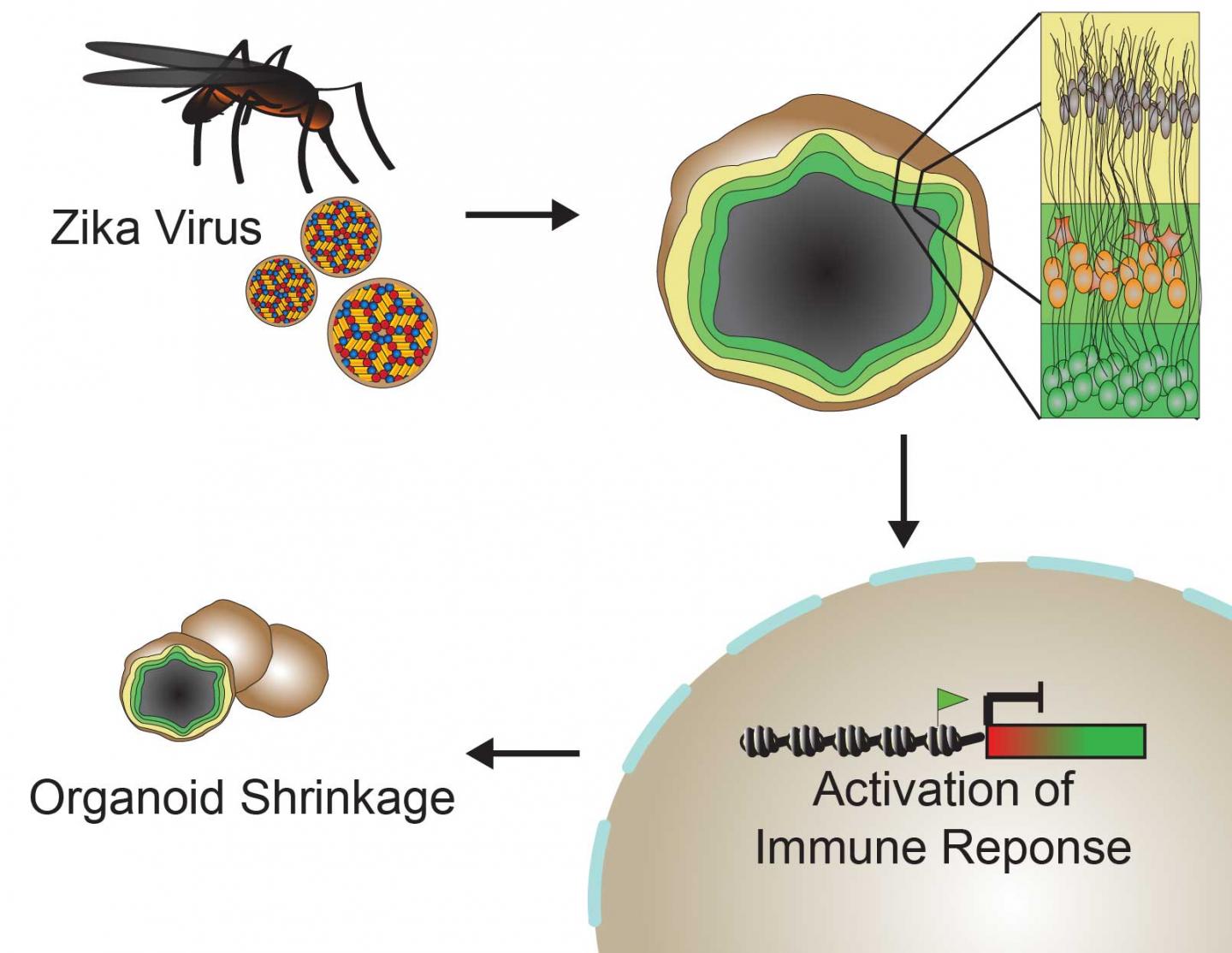
A new addition in the growing number of studies using brain organoids to understand how the Zika virus leads to microcephaly reveals that human neural stem cells infected by the virus subsequently trigger an innate immune response that leads to cell death. On May 6 in Cell Stem Cell, University of California San Diego School of Medicine researchers report that if this immune response is blocked, it helps neural stem cells survive Zika infection.
Zika contributes to cell self-destruction by activating an infected brain cell’s innate immune receptor TLR3, which has long been known to coax cells into producing antiviral proteins as a first line of defense against microbial invaders. Graduate student Jason Dang, whose research interest is in how TLR3 responds to different viruses, stumbled upon this connection when he decided to test TLR3 levels in Zika-infected brain organoids developed in the lab of Tariq Rana at UC San Diego’s Biomedical Sciences Graduate Program.
“We were wondering how strong the evidence was, and we were excited when we saw that when we inhibit TLR3 in the Zika-infected brain organoids, the reduction in their size was less dramatic,” says Rana, a professor of pediatrics and senior author on the paper. “I was still not convinced, so we used a chemical to enhance TLR3 activation and observed that the brain tissue started to shrink a lot faster.”
Previous work in Zika-infected brain organoids helped establish the connection between viral infection and the death of neural stem cells, but Rana’s team adds in a new piece about the role of the immune system. Inhibition of TLR3 may help neurons infected by Zika survive and continue to function as well as their uninfected counterparts, thus providing a target for therapeutic development.
“A part of my lab works on other viruses and we always look at macrophages and other external immune cells–we never would have thought to look at this system,” Rana says. “There are many other viruses that cause central nervous system damage, and now I want to go back and look at those as well.”
###
This work was supported in part by grants from the National Institutes of Health.
Cell Stem Cell, Dang and Tiwari et al.: “Zika Virus Depletes Neural Progenitors in Human Cerebral Organoids through Activation of the Innate Immune Receptor TLR3” http://www.cell.com/cell-stem-cell/fulltext/S1934-5909(16)30057-1
Cell Press Statement on Data Sharing in Public Health Emergencies
The Cell Press family of journals is committed to ensuring that the global response to public health emergencies is informed by the best available research evidence and data, and as such, we will make all content concerning the Zika virus free to access. We will work in partnership with reviewers to fast-track review all submissions concerning Zika. We will adapt the editorial criteria that we apply to Zika submissions by asking reviewers to evaluate only if the research methods are sound and support the conclusions and if the work will contribute in some way toward resolving the immediate challenges. We will expedite publication of papers that meet these two criteria.
Cell Stem Cell (@CellStemCell), published by Cell Press, is a monthly journal that publishes research reports describing novel results of unusual significance in all areas of stem cell research. Each issue also contains a wide variety of review and analysis articles covering topics relevant to stem cell research ranging from basic biological advances to ethical, policy, and funding issues. Visit: http://www.cell.com/cell-stem-cell. To receive Cell Press media alerts, contact [email protected].
Media Contact
Joseph Caputo
[email protected]
617-397-2802
@CellPressNews
http://www.cellpress.com
The post Evidence that Zika causes neural stem cells to self-destruct appeared first on Scienmag.





